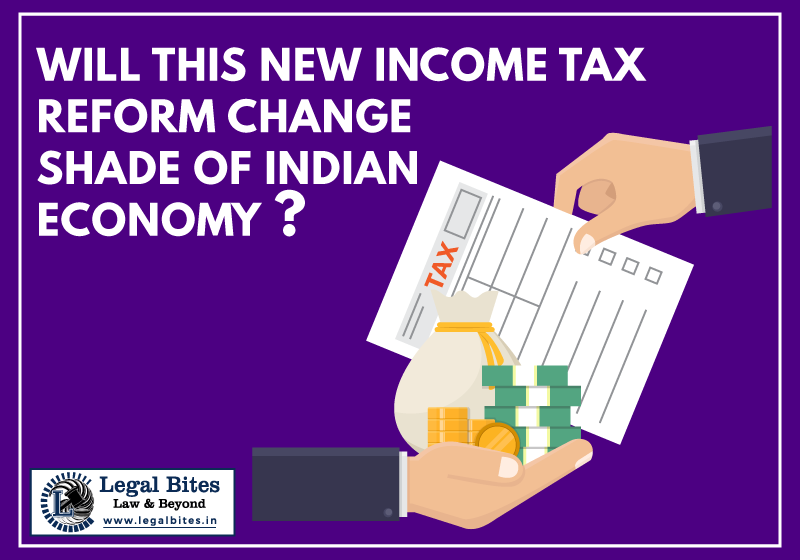Will this new Income Tax Reform change the shade of Indian Economy?
In this article, Nihal S Mujawar discusses the new Income Tax Reform and whether it will change the shade of the Indian economy. Introduction to the new Income Tax Reform Our Prime Minister Narendra Modi recently unveiled faceless tax scrutiny and appeal and urged people to pay their due taxes and contribute to nation-building. The Indian prime minister… Read More »

In this article, Nihal S Mujawar discusses the new Income Tax Reform and whether it will change the shade of the Indian economy.
Introduction to the new Income Tax Reform
Our Prime Minister Narendra Modi recently unveiled faceless tax scrutiny and appeal and urged people to pay their due taxes and contribute to nation-building.
The Indian prime minister also said that the faceless assessment and taxpayer charter will come into place from today itself, while the faceless appeal is going to be applicable from September 25 across the country.
Lets Took a Look at the features of the Faceless Assessment Scheme.
- Selection of a taxpayer only through the system using data analytics and AI
- Abolition of territorial jurisdiction
- Automated random allocation of cases
- Central issuance of notices with Document Identification No. (DIN)
- No physical interface, no need to visit the income tax office
- Team-based assessments and team-based review
- Draft assessment order in one city, review in another city and finalisation in the third city.
Hotel bills, business class flight tickets may come under the scanner with this new Reform.
The finance ministry has also proposed new measures to ensure better compliance and transparency by expanding the scope of reporting of following transactions:
- Education-related fees and donations above ₹1 lakh in a year
- Electricity bill of more than ₹1 lakh in a year
- Domestic business class air travel or foreign travel
- Hotel bills above ₹20,000
- Purchase of jewellery, white goods, paintings, marble, etc above ₹1 lakh
- Deposits or credits in the current account above ₹50 lakh
- Deposits or credits in the non-current account above ₹25 lakh
- Payment of property tax above ₹20,000 per annum
- Life insurance premium above ₹50,000
- Health insurance premium above ₹20,000
- Share transactions, Demat account, bank lockers
Besides, the government has also proposed to deduct TDS at higher rates for those who do not file income tax returns (ITR). There is also a proposal for compulsory filing of ITR by those having bank transactions above ₹30 lakh, all professionals and businesses having turnover of more than ₹50 lakh and payment of rent above ₹40,000.
While the tax base has increased by 2 to 2.5 crore people in the last 6-7 years, given the population of the country at 130 crore, it is still not enough.
Reportedly, there is only one taxpayer for 16 voters in the country. Around six crore file, IT returns, and around 5 crores of them pay practically no tax. Only 1.46 crore people pay tax on their income in the country.
The government also launched several measures to widen the tax net, including increasing the scope of the transactions to be reported. It will be interesting to see how much Indian Taxpayers digest the changes in the coming period and also Important to see how will this income tax Revolution really change the face of the Indian economy in upcoming years.
– Nihal S Mujawar
(Journalist, Law & CA Aspirant, Partner at Sadik Mujawar & Associates)
